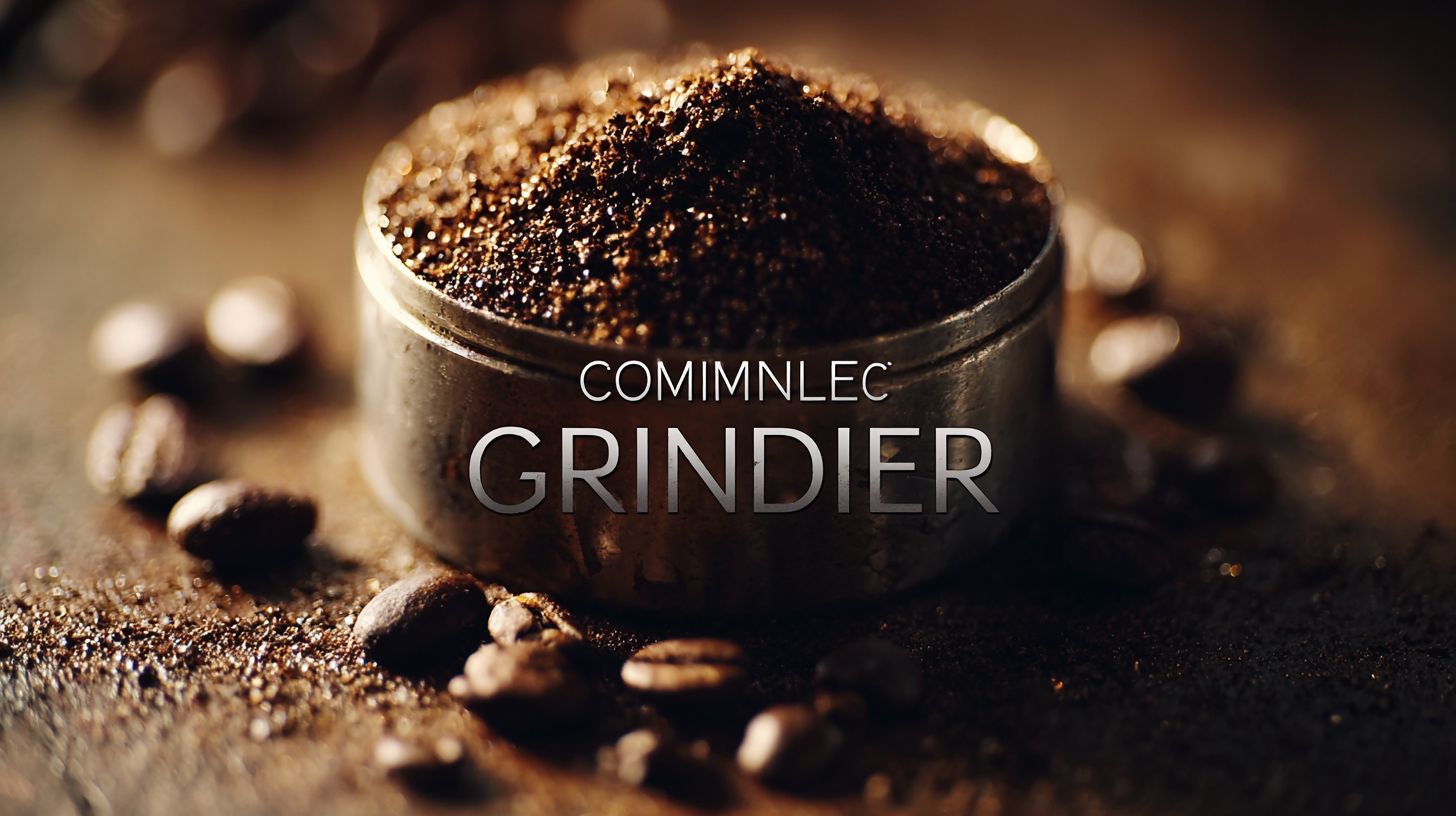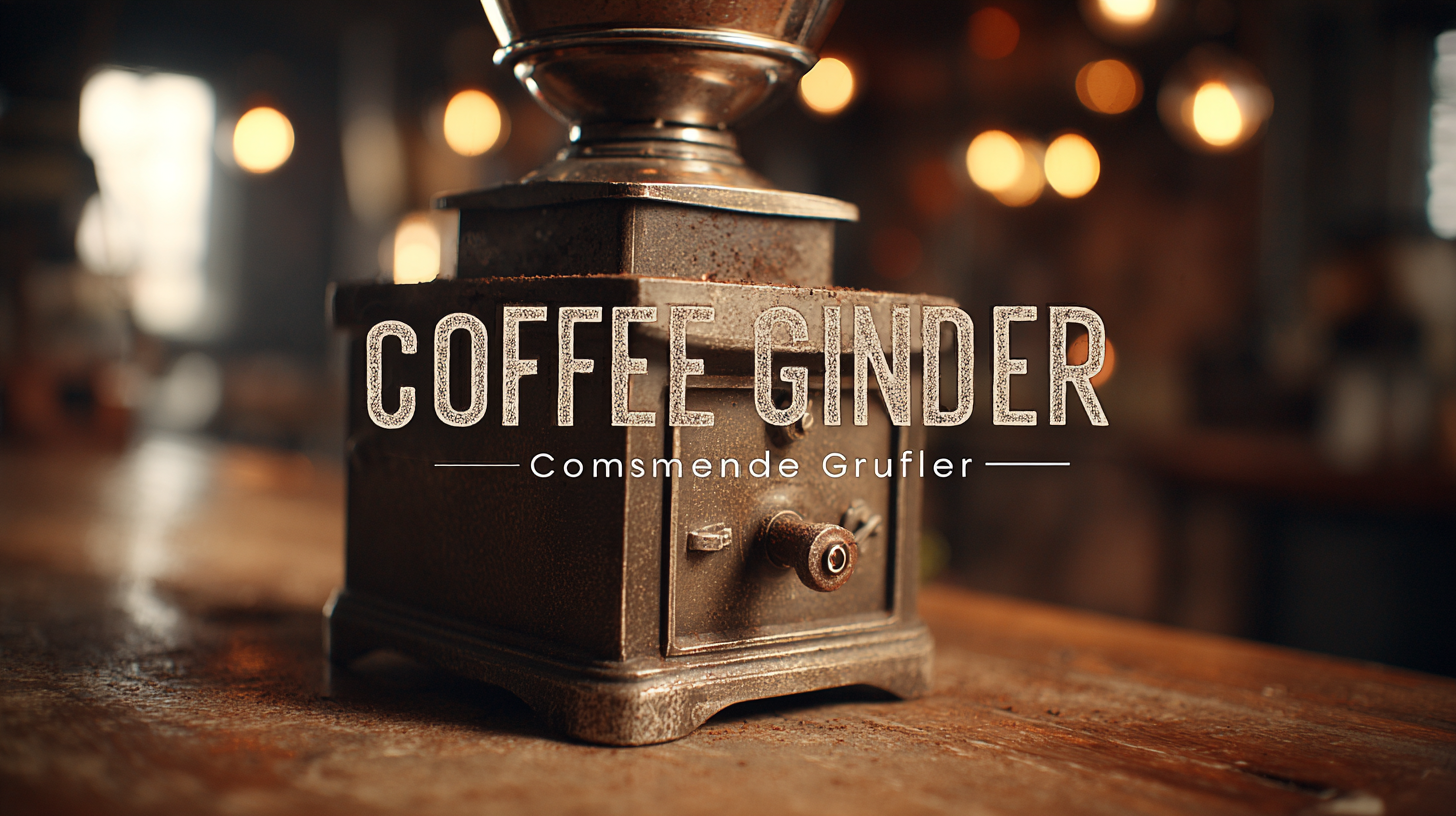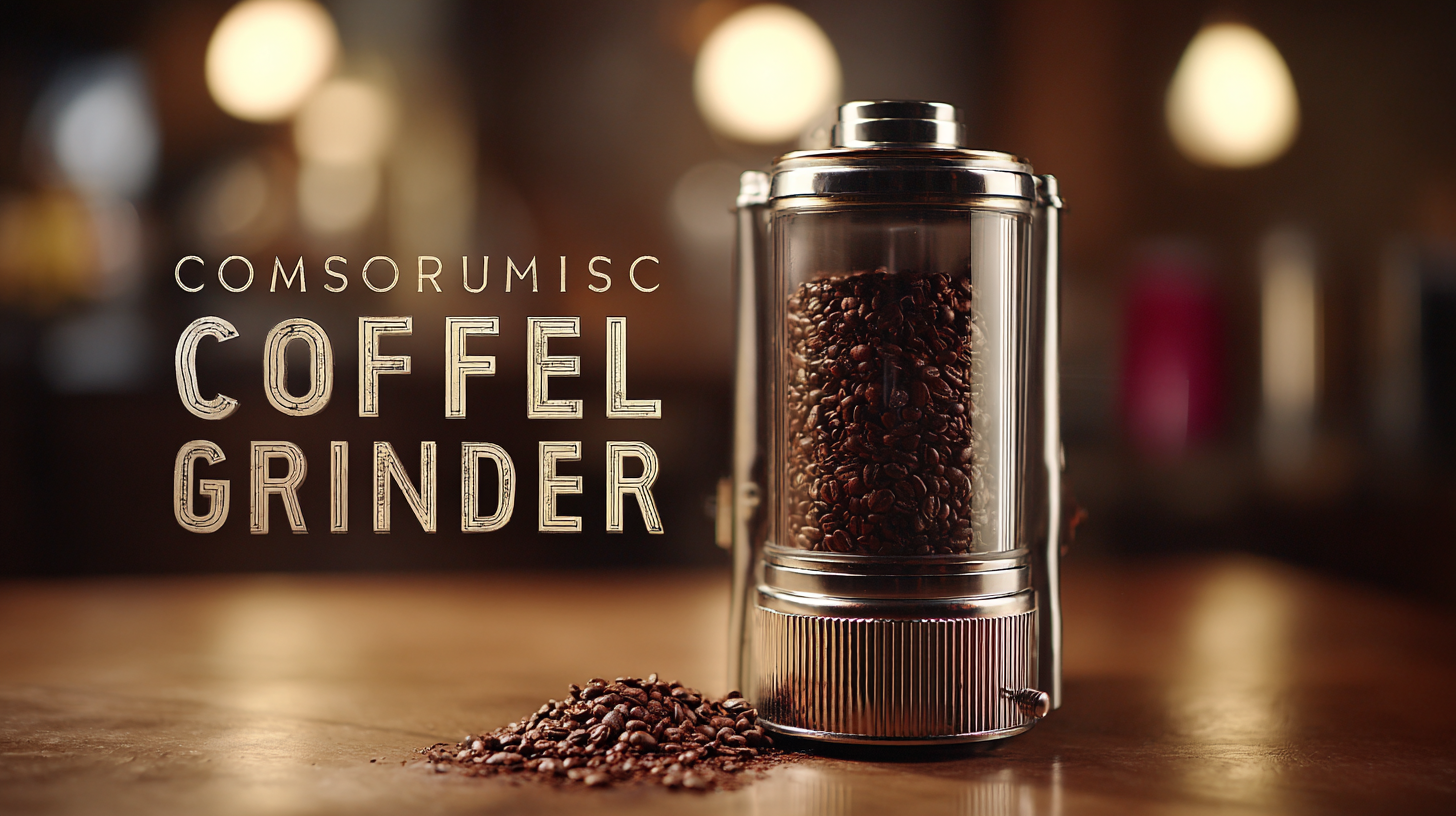Leave Your Message
-
Phone
-
E-mail
-
Whatsapp
-
Whatsapp


In the fast-evolving coffee industry, the choice of equipment significantly impacts both the quality of the brew and the overall profitability of a business. According to a report by IBISWorld, the coffee shop industry in the United States alone is projected to reach $45.4 billion in revenue by 2025, highlighting the importance of operational efficiency and product excellence. A crucial component in achieving this is the Commercial Coffee Grinder, which not only affects the flavor profile and consistency of coffee but also plays a vital role in attracting and retaining customers. However, with a plethora of options available, businesses face challenges in selecting the right grinder that meets their specific needs, balancing functionality with budget constraints. This ultimate guide delves into the variety of business applications for commercial coffee grinders, while also addressing the common challenges that operators encounter in their quest for the perfect grind.

Choosing the right commercial coffee grinder is crucial for businesses in the food and beverage industry. The grinder affects not only the flavor profile of the coffee served but also the efficiency of operations. A quality grinder ensures consistent particle size, which is essential for extracting the best flavors from the coffee beans. Businesses that prioritize flavor will find that investing in a high-performing grinder can lead to increased customer satisfaction and repeat business.
Moreover, the challenges associated with selecting a commercial coffee grinder can be daunting. Factors such as grind size uniformity, grind speed, and maintenance requirements must be considered. A grinder that is difficult to clean may lead to issues with product quality, while one that operates too slowly can slow down service during peak hours. Understanding the specific needs of the business, including the types of coffee offered and the volume of sales, will help in making a more informed decision. Ultimately, a thoughtful choice in commercial coffee grinders can significantly enhance the overall customer experience and operational efficiency.
When it comes to commercial coffee grinding, understanding the different types of grinders is crucial for businesses looking to optimize their coffee offerings. There are primarily two categories of commercial coffee grinders: blade grinders and burr grinders. Blade grinders utilize sharp blades to chop coffee beans into uneven fragments, which can lead to inconsistent flavor profiles. While they may be more affordable and easier to use, the lack of uniformity in grind size can negatively impact the quality of brewed coffee, making them less suitable for high-end establishments.
On the other hand, burr grinders are designed to crush beans between two surfaces, allowing for a controlled grind size. They come in two variations: flat burr and conical burr grinders. Flat burr grinders provide a consistent grind but can generate more heat, potentially affecting the coffee's flavor. In contrast, conical burr grinders are praised for their ability to minimize heat retention and static, providing a cooler and more efficient grinding process. Understanding these nuances can help coffee businesses select the right grinder, ensuring they meet their customers' expectations while overcoming challenges related to grind consistency and flavor preservation.
When selecting a high-quality commercial coffee grinder, it is essential to consider several key features that directly affect the quality of coffee produced and operational efficiency. Firstly, blade material and type significantly impact grinding consistency. According to the Specialty Coffee Association (SCA), burr grinders are favored over blade grinders because they provide a uniform grind size, critical for flavor extraction. A well-regarded study revealed that a consistent grind can improve brew quality by up to 30%, making it a vital factor for any coffee-centric business.
Another critical feature to evaluate is the grinder's capacity and speed. Coffee shops and restaurants often face high demand, and investing in a grinder that can handle large volumes—without sacrificing grind quality—is crucial. The National Coffee Association (NCA) indicates that grinders with higher RPM (Revolutions Per Minute) can produce fine grinds more quickly but may also generate more heat, which can impact coffee flavor. Therefore, businesses should look for grinders equipped with advanced cooling systems that maintain temperature stability during operation.
Finally, usability and maintenance requirements cannot be overlooked. A grinder that is easy to operate and clean can reduce downtime and increase productivity. Reports suggest that coffee shops experience up to 20% fewer operational issues with user-friendly equipment, highlighting the importance of investing in a grinder that simplifies daily tasks while ensuring top-notch coffee quality.

When operating commercial coffee grinders, businesses often encounter several challenges that can impact the quality of their brewed coffee. One common issue is inconsistency in grind size, which can lead to uneven extraction and ultimately affect the flavor profile of the coffee. To overcome this, regular calibration and maintenance of the grinder are essential. Establishing a routine to check and adjust the grind settings based on the specific brew method being used can greatly improve consistency and enhance the overall customer experience.
Another significant challenge is the build-up of coffee oils and residues within the grinder, which can compromise the taste of the coffee and even affect the performance of the equipment. Implementing a thorough cleaning schedule, including the use of suitable cleaning agents, can help mitigate this issue. Additionally, staff training on proper cleaning techniques can ensure that all team members are equipped to maintain the grinder effectively, thus extending its lifespan and keeping coffee flavors vibrant.
Lastly, noise and vibrations from commercial grinders can be a concern, especially in quiet cafe settings. Investing in grinders with noise-reducing features or placing them on vibration-absorbing mats can help minimize disruptions. Addressing these challenges not only enhances operational efficiency but also plays a crucial role in delivering an exceptional coffee experience to customers.

When it comes to commercial coffee grinders, maximizing efficiency through proper maintenance is crucial for optimal performance. According to a recent market report, the demand for precision grinding machines in the coffee industry is expected to surge significantly between 2025 and 2035. This rising demand underscores the necessity for coffee businesses to invest in high-quality grinders and maintain them meticulously to ensure they meet evolving consumer preferences for consistency and quality.
Proper maintenance can dramatically enhance the lifespan and efficacy of coffee grinders. Regular cleaning is essential; built-up residues can alter the grind quality and affect flavor profiles. Reports indicate that businesses that implement routine maintenance schedules can extend the operational life of their grinders by up to 30%. Additionally, monitoring grind settings and ensuring proper calibration can help maintain the precision required to meet the shifting trends in the coffee market, where consumers are increasingly favoring specialty brews over standard offerings.
As we look ahead, the emphasis on efficiency and quality in the coffee grinding process not only leads to better product output but also aligns with the growing consumer demand for premium coffee experiences. By prioritizing maintenance and performance, coffee businesses can remain competitive in an evolving market landscape.
